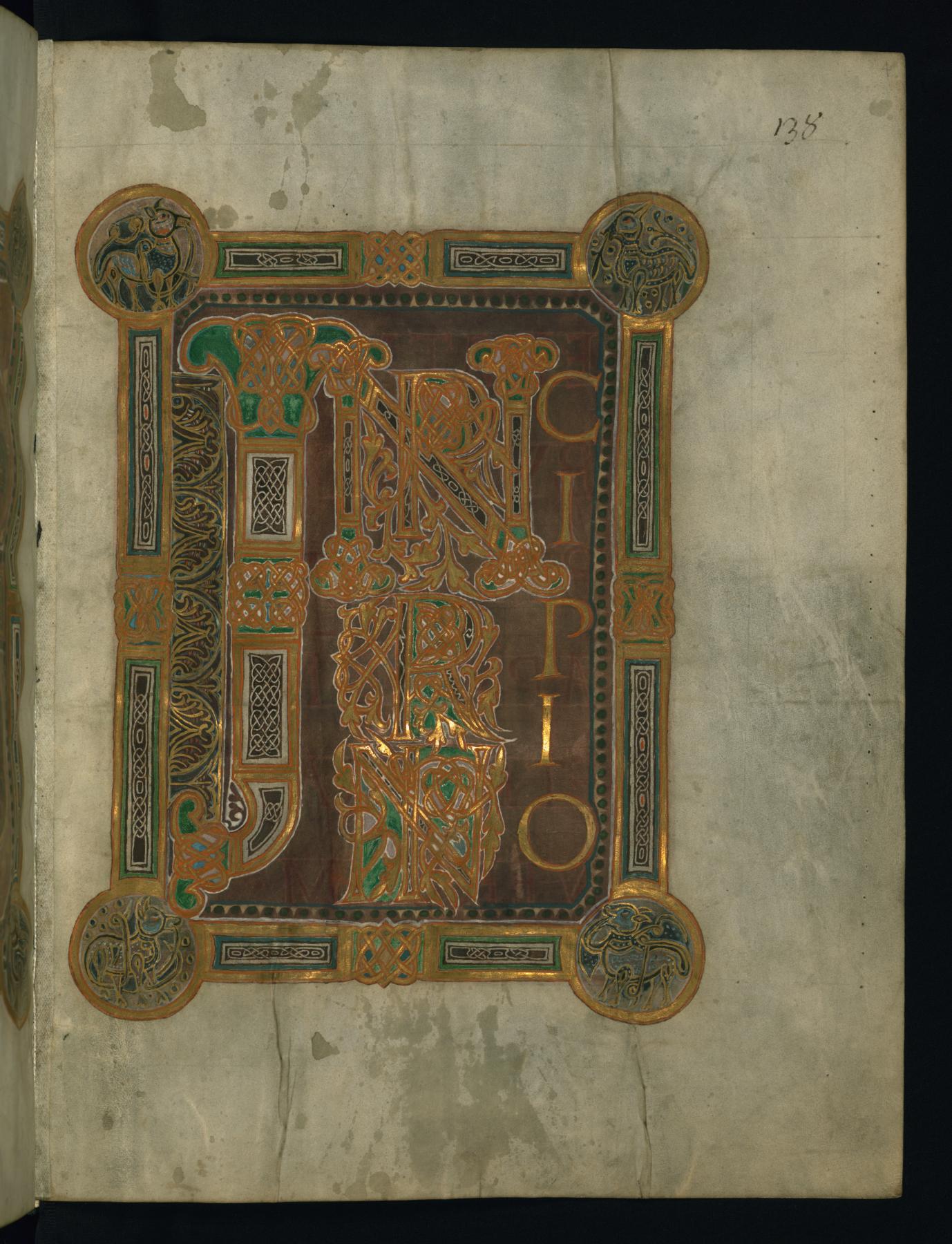Incipit page for the Gospel of St. John
(Manuscripts and Rare Books)
During the early Medieval period, artists created sophisticated interplays between word and image. Often, the opening words of each Gospel would be intricately decorated, with the ornament and letters intertwined. Although the Medieval viewer would know what it should say and had no need to read it, deciphering the page, and thereby focusing attention on the sacred word of God, became an act of spiritual contemplation.
Provenance
Provenance (from the French provenir, 'to come from/forth') is the chronology of the ownership, custody, or location of a historical object. Learn more about provenance at the Walters.
Written in the Monastery of Corvey on the Weser River in Germany ca. 940-975, during the reign of Otto I [based on style and paleography]; [Originally part of a Gospel Book belonging to the Chapter Library of the Cathedral of Rheims until the French Revolution, now Ms. 10 in the Rheims Municipal Library]; Sir Thomas Phillips, London, ca. 1855 [mode of acquisition unknown] [Ms. 14122, noted on bottom of fol. 1r]; A. Chester Beatty, December 1920, acquired privately from Phillips collection; Walters Art Museum, October 1952, by purchase [from Mrs. Chester Beatty through Maggs Brothers].
Exhibitions
| 2010 | Checkmate! Medieval People at Play. The Walters Art Museum, Baltimore. |
| 2006 | Schatzkammer: Henry Walters' German Manuscripts. The Walters Art Museum, Baltimore. |
| 1984-1985 | Illuminated Manuscripts: Masterpieces in Miniature. The Walters Art Gallery, Baltimore. |
Geographies
Germany, Corvey (Place of Origin)
Measurements
H: 12 5/16 x W: 9 1/2 in. (31.2 x 24.2 cm)
Credit Line
Museum purchase, 1952
Location in Museum
Not on view
Accession Number
In libraries, galleries, museums, and archives, an accession number is a unique identifier assigned to each object in the collection.
In libraries, galleries, museums, and archives, an accession number is a unique identifier assigned to each object in the collection.
W.751.4R



